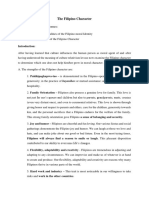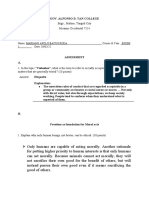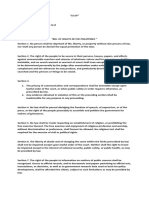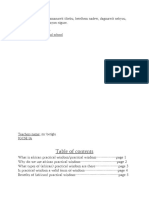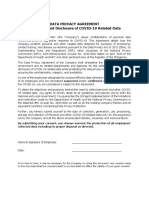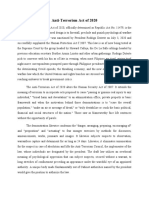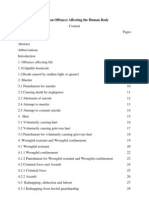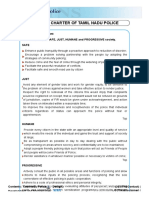100% found this document useful (1 vote)
64 views4 pagesEthics Introduction Activity
The document outlines an ethics module that discusses principles of ethical behavior at the individual, societal, and environmental levels. It defines key terms like ethics and morality, and differentiates between moral and non-moral standards. The module aims to teach students how to make ethical decisions by analyzing moral dilemmas using dominant frameworks and a seven-step model.
Uploaded by
Prince Mark RodaCopyright
© © All Rights Reserved
We take content rights seriously. If you suspect this is your content, claim it here.
Available Formats
Download as PDF, TXT or read online on Scribd
100% found this document useful (1 vote)
64 views4 pagesEthics Introduction Activity
The document outlines an ethics module that discusses principles of ethical behavior at the individual, societal, and environmental levels. It defines key terms like ethics and morality, and differentiates between moral and non-moral standards. The module aims to teach students how to make ethical decisions by analyzing moral dilemmas using dominant frameworks and a seven-step model.
Uploaded by
Prince Mark RodaCopyright
© © All Rights Reserved
We take content rights seriously. If you suspect this is your content, claim it here.
Available Formats
Download as PDF, TXT or read online on Scribd
/ 4


